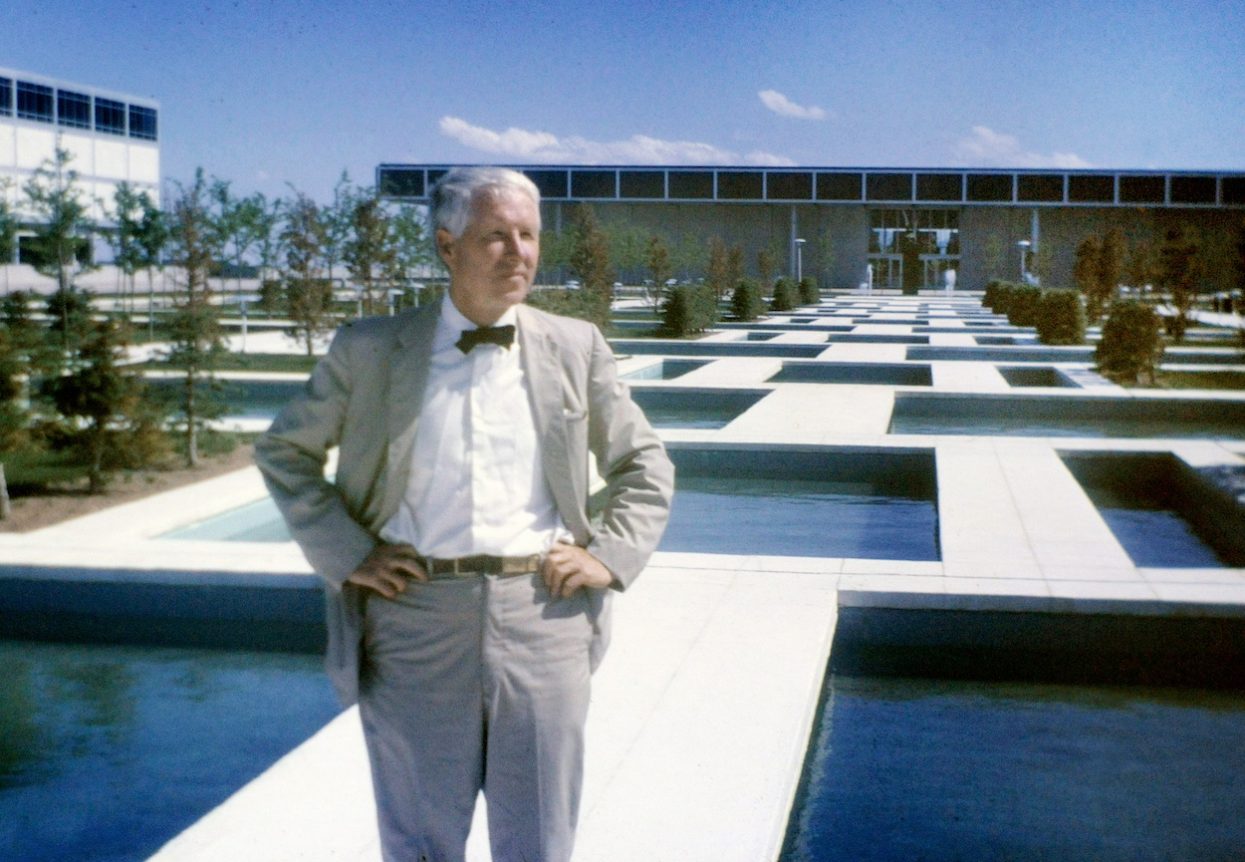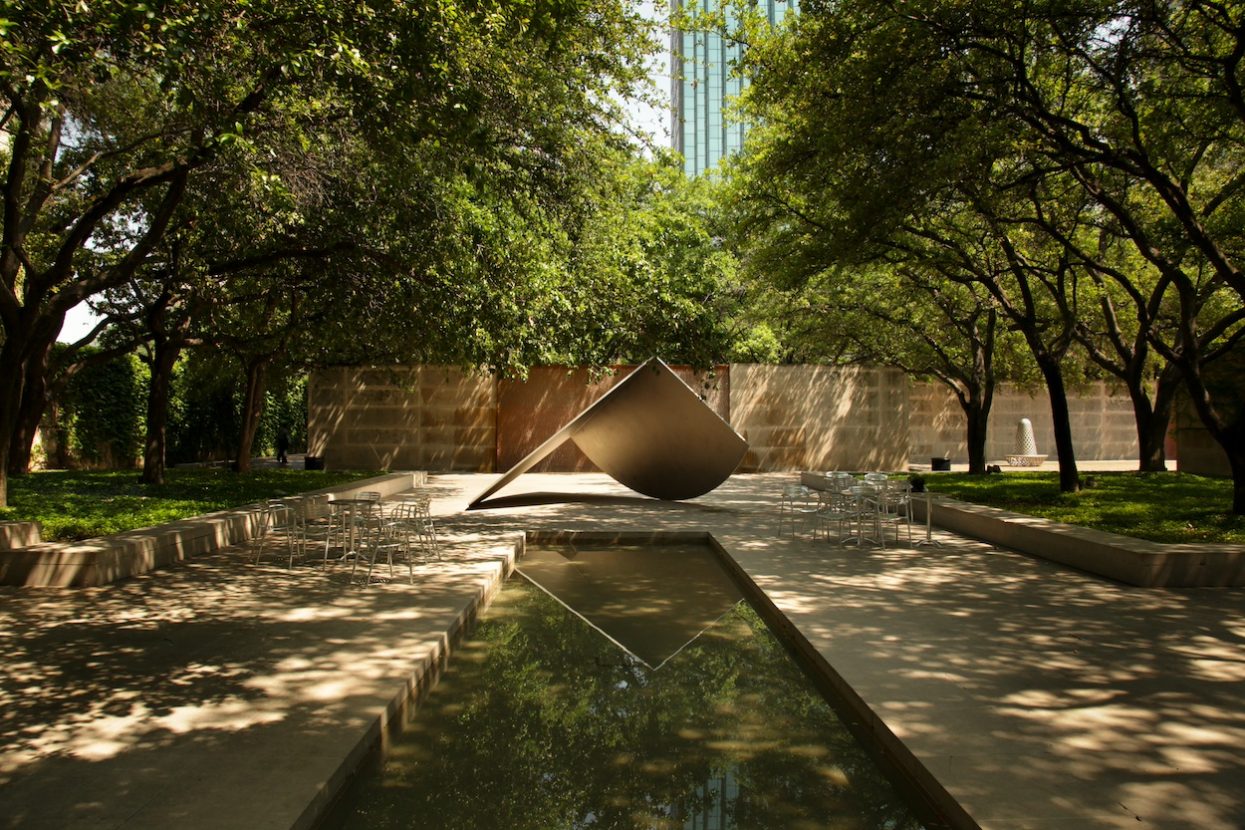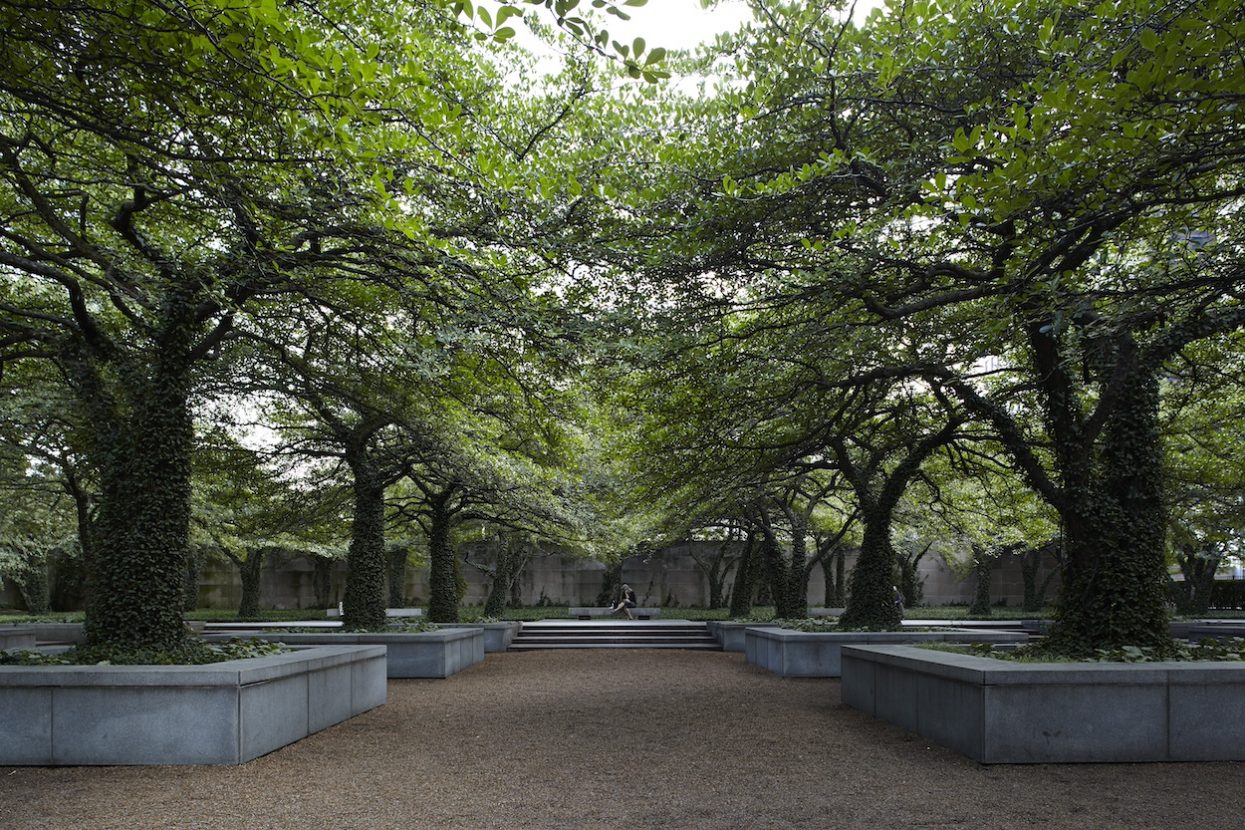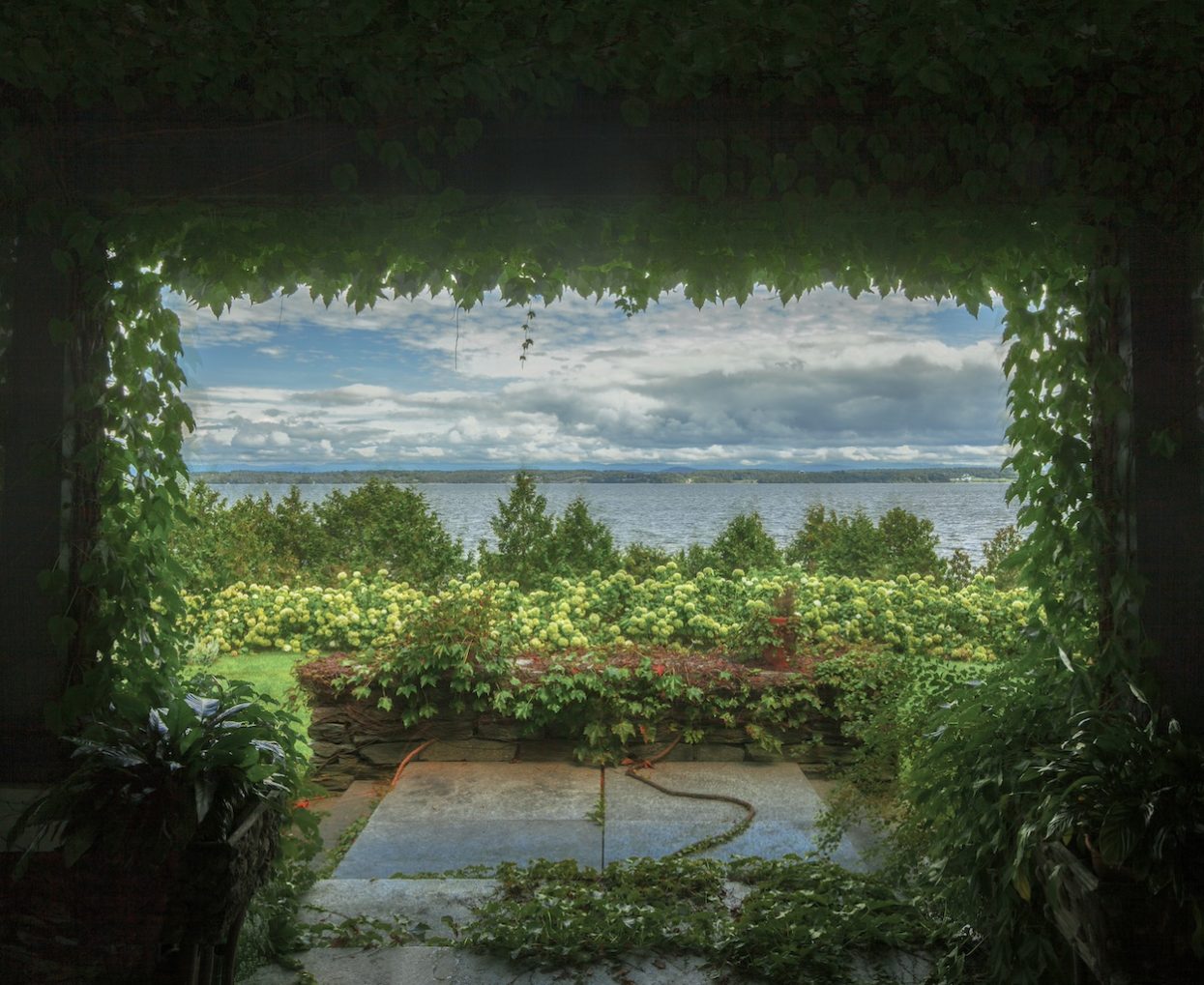It seems impossible to fully document the output of the late Dan Kiley, one of the 20th century’s most influential Modernist landscape architects who worked with Eero Saarinen, Louis Kahn, and I.M. Pei over a prolific six-decade career. His peers can attest: landscape architect Laurie Olin observed the enigmatic Kiley’s “thoughts are like rabbits—they just keep leaping out,” while architect Jacquelin Robertson quipped that he “looked like a cross between a leprechaun and a Tyrolean ski instructor.” Though he completed an array of rigorous, grid-like landscapes that have drawn comparisons to Le Corbusier and persist as Modernist icons, including the Jefferson National Expansion Memorial (home to Saarinen’s Gateway Arch), the Ford Foundation in New York, and the Art Institute of Chicago’s South Garden, many of his achievements have been erased, owing mostly to the ephemerality of nature.
When the centennial of Kiley’s birth went unsung in 2012, the Cultural Landscape Foundation sprung to action and pieced together a traveling photographic retrospective to celebrate his life and career. “The Landscape Architecture Legacy of Dan Kiley” landed at the National Building Museum and the New York Center for Architecture a decade ago, but returned twice as large to Brooklyn’s ABC Stone last week. Photographs by Marion Brenner, Todd Eberle, and Alan Ward not only document the current state of 27 of Kiley’s more than 1,000 landscapes, but shed light on how he created intricately textured gardens that brought out the best in Modernist architecture. Credit his biggest influences, including French classicist André Le Nôtre, the sweeping allées of Versailles and Vaux-le-Vicomte, and Walter Gropius, who revolutionized Harvard’s architecture curriculum while Kiley studied there in the 1930s.




